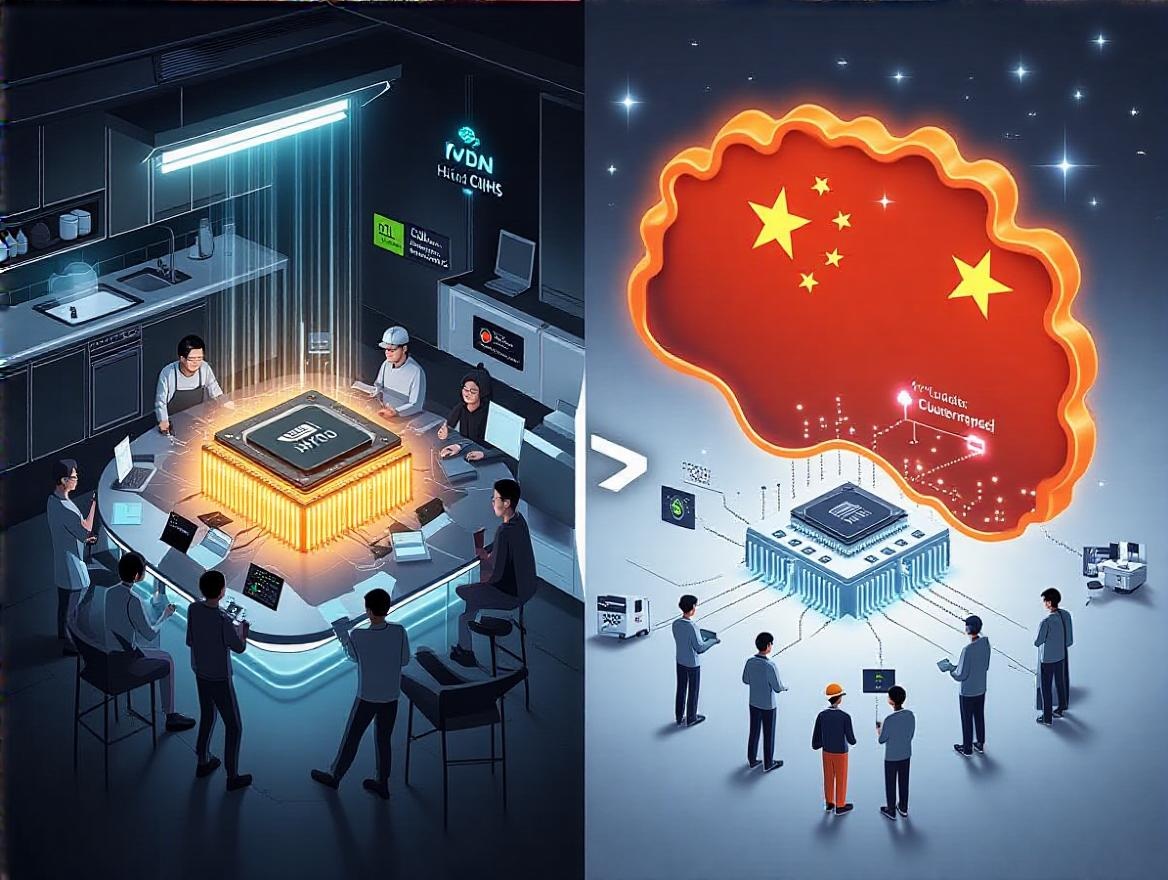Hey everyone!
Let’s talk about AI—specifically, the gap between the US and China. You’ve probably heard people say, “China is just a couple of years behind the US in AI.” But is that really true? Recently, Liang Wenfeng, founder of DeepSeek, dropped some truth bombs:
> “The real gap isn’t about time—it’s about originality versus imitation. If this doesn’t change, China will remain a follower.”
Ouch. But is he right? Let’s break it down with facts, examples, and a little cooking analogy (because who doesn’t love food?).
---
🔥 The “Fishing” Analogy: Catching vs. Following
Liang summed it up perfectly:
> “The US is like fishing—creating new ways to catch; China is like being handed a fish—or worse, a fishing manual.”
The US doesn’t just advance—it defines the direction. China, meanwhile, often excels at scaling and optimizing what’s already been created.
---
🧠 The Tech Kitchen: US = Master Chef, China = Talented Line Cook
In the US:
Imagine a world-class kitchen. NVIDIA is the head chef with world-class tools (H100 chips) and a full ecosystem (CUDA). Millions of global developers use its platform, creating an unbeatable “AI friend network.” They’re not just cooking—they’re inventing new recipes.
In China:
The kitchen is newer, smaller, and still growing. Chefs are smart and hardworking, but many are still perfecting dishes others invented. Huawei’s Ascend chips are impressive—sometimes outperforming older NVIDIA models—but the ecosystem isn’t as mature.
It’s not just about hardware. The US controls the supply of high-end AI chips, leaving China with restricted or “watered-down” versions. That makes true independence in AI a steep climb.
---
👩🔬 Talent & Research: The “Brain Drain” Reality
The US doesn’t just have tech—it attracts global talent. Many of the brightest AI researchers, including top Chinese graduates, study and work there. They drive foundational breakthroughs.
China is expanding its talent pool rapidly, but experience and original research depth still lag. More patents? Yes—but many focus on applications, not core algorithms. As Liang hinted:
> “You can patent a better burger flipper, but did you invent the grill?”
---
🌱 But Here’s the Hopeful Part…
It’s not all imitation—China is stepping up its original game.
- Government policies now strongly support R&D.
- Universities and labs are publishing more pioneering papers.
- Homegrown frameworks like Baidu’s PaddlePaddle and Huawei’s MindSpore are gaining traction. They’re building their own “AI grocery store.”
- China’s massive data and unique application scenarios (smart factories, fintech, healthcare) allow for hyper-localized innovation.
- Companies like Huawei and Cambricon are narrowing the chip performance gap. In some cases, Huawei’s CloudMatrix even outperforms international rivals.
Still, the path to true originality is long. It requires:
- Encouraging curiosity-driven, not just profit-driven, research.
- Investing in foundational studies—like OpenAI spending years on GPT with no immediate payoff.
- Cultivating a culture that celebrates trial, error, and unconventional thinking.
---
🚀 The Future: From Follower to Trailblazer?
China’s AI industry is like a talented teen: full of energy and potential, but still learning to create, not just replicate. The US is the seasoned pro with decades of expertise.
But with China’s market size, data resources, and growing investment in originality, the gap will shrink. The question isn’t if—but when.
As Liang said:
> “Walking someone else’s path will never lead to long-term success or security.”
China knows this. And they’re cooking up something new. Maybe soon, we’ll all be tasting original Chinese AI—and loving it.
What do you think? Can China transition from follower to innovator? Comment below! 👇
---
Tags: #AI #TechTrends #USChinaTech #Innovation #NVIDIA #Huawei #DeepSeek
--Article inspired by insights from Liang Wenfeng, Founder of DeepSeek--
